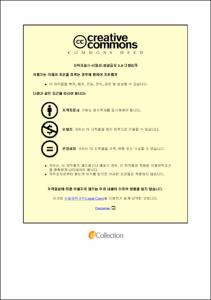소아 동종조혈모세포이식에서 급성 이식편대숙주병의 발생과 공여자 및 수여자의 위장관 미생물총과의 연관성
- Abstract
- Purpose: Acute graft versus host disease (aGvHD) is an immunological disorder developing by a process in which donor-derived T cells recognize the recipient tissue as non-self after hematopoietic stem cell transplantation (HSCT). Gut microbiome dysbiosis can trigger several inflammatory disorders, including aGvHD. However, the association between aGvHD and gut microbiome of the pediatric HSCT recipients was rarely reported.
Methods: We prospectively enrolled pediatric recipients aged 19 years old who underwent allogeneic HSCT at Asan Medical Center Children’s Hospital, between September 2018 and February 2019. We collected 3 pairs of fecal samples from both the recipient (R0) and the relevant donor (D0) just before HSCT, and then from the recipient (R1) at 1 month following HSCT. Microbial analysis of fecal samples was performed using 16S rDNA gene sequencing. Operational taxonomic unit-based bacterial diversity was estimated by calculating Chao1 index. The Bray-Curtis dissimilarity was used to compare the diversity among each sample. Demographic data and clinical findings of recipients were abstracted from electrical medical records. Acute GvHD was diagnosed clinically and graded by the International Bone Marrow Transplant Registry criteria.
Results: Total 10 pediatric allogeneic HSCT recipients were enrolled. Their median age was 10.8 years and underlying disease leading to HSCT was almost malignancies including hematologic malignancy or solid tumor. All recipients used oral antibiotics for gut decontamination from start of conditioning to day -2. Four recipients received systemic antibiotics as prophylaxis at the time point of pre HSCT fecal sampling, and 2 recipients was treated with antibiotics at post HSCT fecal sampling.
The median values of Chao1 index in R0 and R1 were 168.98 (range, 55.83-289.15) and 111.59 (range, 11.5-246.92), respectively. Average alpha diversity of R1 tended to show a lower diversity by 15% compared to R0. The median value of Chao1 index of D0 was 193.96 (range, 93.15-322.02). Three recipients developed aGvHD within 100 days following HSCT. Two had stage 3 skin aGvHD and stage 2 skin aGvHD, respectively. One patient developed grade 3 gastrointestinal and skin aGvHD. The median Chao1 index in R0, R1, and D who developed aGvHD was lower than those in R0, R1, and D who did not develop aGvHD, although not statistically significant. R1 in aGvHD group showed a higher abundance of Gerbera hybrid cultivar genus (p = 0.03) and a lower abundance of Erysipelatoclostridium genus (p = 0.05) compared to those in group without aGvHD. Donors whose relevant recipients experienced aGvHD showed higher abundance of [Eubacterium] eligens group genus (p = 0.04). However, we could not find the statistically significant difference in composition of R0 which was associated with aGVHD.
Conclusions: Our results indicated that there was a difference in microbiome composition between pediatric recipients who developed aGvHD and who did not develop aGvHD, although no differences in bacterial were observed between aGvHD and non-aGvHD groups. . Identifying the gut microbiome of recipients and donors could help predict the occurrence of aGvHD.
- Issued Date
- 2019
- Awarded Date
- 2020-02
- Type
- Dissertation
- Affiliation
- 울산대학교
- Department
- 일반대학원 의학과의학전공
- Advisor
- 이진아
- Degree
- Doctor
- Publisher
- 울산대학교 일반대학원 의학과의학전공
- Language
- eng
- Rights
- 울산대학교 논문은 저작권에 의해 보호받습니다.
- Appears in Collections:
- Medicine > 2. Theses (Ph.D)
- 파일 목록
-
-
Download
 200000292253.pdf
기타 데이터 / 859.39 kB / Adobe PDF
200000292253.pdf
기타 데이터 / 859.39 kB / Adobe PDF
-
Items in Repository are protected by copyright, with all rights reserved, unless otherwise indicated.